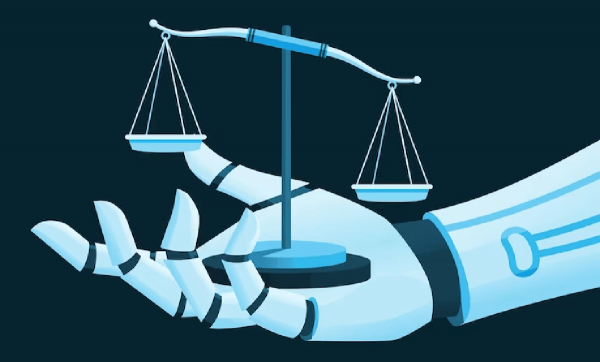Summary
Artificial Intelligence trends are evolving rapidly. More and more companies are initiating digital transformation projects related to AI. The AI revolution is well underway.
What fuels the interest in new AI trend beyond the notion of profitability is versatility. As we've seen over the past year, there are countless ways to apply AI technology. This gives us the opportunity to review AI trends of 2025.
Key figures: AI trends in 2025
- 80% of companies will have used APIs or generative AI models in their production environment by 2026, compared to 5% in 2023 (Gartner).
- The generative AI market could be valued at $1.3 trillion by 2032 (Bloomberg).
- Generative AI could increase the productivity of professional users by 30 to 40% (PwC - 2023).
- Nearly 73% of consumers trust content written by AI tools (CapGemini - 2023).
- In 2024, there will certainly be as many, if not more, digital voice assistants than humans on the planet (8.4 billion units) (Statista).
- By 2030, China is expected to be the leading country in AI with more than 26% market share (IMD).
Trend AI #1: Abundant Generative AI
💡Key takeaway: In 2025, the expansion of generative AI trends is expected to continue with new tools and use cases aimed at both the general public and professionals in all sectors. According to Bloomberg, by 2032, the generative AI market could be valued at over $1.3 trillion, mainly driven by sales of hardware and software for AI infrastructure management.
In 2023, generative AI became widely accessible thanks to models like ChatGPT. And yet, we are only at the beginning stages of its expansion.
In 2025 and the coming decade, new tools and applications for both the general public and professionals will hit the market. The demand from individuals and business people across industries is definitely there! In fact, by 2032, the generative AI market could be valued at over $1.3 trillion (Yes, you read that number right!).
According to Bloomberg, hardware is expected to be the main driver of the market, as models require machines with high computational power. Software will follow, particularly in areas such as generative AI assistants and tools for managing AI infrastructure in a broad sense.
Trend AI #2: The Rise of Multimodal Models
💡Key takeaway: The democratization of multimodal learning models is underway. Competition between AI leaders aims to create the most comprehensive multimodal model that will revolutionize all industries in the near future.
What is a unimodal model?
In AI, "unimodal" refers to a model that can focus on only one type of data when performing a specific task.
Let's take a simple example of image recognition. In this context, one type of data is sufficient. This means that the model's training to make predictions or decisions is based on only one type of information: the images or, more precisely, the pixels of the images.
As it is specialized in only one data modality, such a model might face limitations, especially when it comes to interpreting complex contexts that could be better understood if the model had been trained on several types of data.
What is a multimodal model?
A model is said to be multimodal when it can process several types of data and modalities. Such a model can be used to analyze images, sound, text, videos, and so on.
The analyses are richer and lead to more precise results, enabling a better understanding of the relationships between input data, even when they are of different natures.
One application for businesses is the ability to better understand customers thanks to the different signals received during their interactions. For example, a multimodal model could interpret the tone of voice during phone calls, transcriptions of the conversation, emails, text messages, etc.
Predictions for 2025
As you may have understood, the future of generative AI will inevitably involve multimodality, which allows artificial intelligence to approach human cognitive functioning.
In the coming years (or months, depending on the speed of technological progress), the possibilities offered to businesses and individuals will be broader and more impactful than those currently available.
Multimodality is already here, but it has not become easily accessible to the public.
Instead, what we are currently seeing is a fierce battle between technology leaders to create a complete multimodal model. This could then function as a cornerstone to train the highly specialized models that will soon deploy across all industries (and notably healthcare, research, agriculture, education, finance, etc.).
Trend #3: Seamless Integration of AI into Workflows
💡Key takeaway: In 2025, AI integration into workflows remains a major trend. While generative AI initially focused on handling specific tasks, it is now expanding across entire operational and decision-making processes within companies.
It is now easier than ever to integrate AI tools into your tech stack thanks to a growing number of APIs and ready-to-use integrations.
Software providers are also increasingly offering AI-powered features directly embedded into their business solutions, significantly boosting productivity.
According to PwC, generative AI could make business users 30% to 40% more productive!
What Does This Change for You?
Let's take the example of sales teams.
Recent studies show that sales professionals spend only 30% of their time actually selling (Salesforce Study). Why? A wide range of reasons:
- Misalignment with other departments
- Time-consuming administrative tasks (note-taking, document sharing, CRM updates...)
- Excessive meetings
- Poor time management
- Difficulty tracking performance
AI can solve many of these challenges—if not eliminate them altogether.
AI in Action: How Empower by Ringover Boosts Sales Teams
👉 Leverage Every Call Without Wasting Time
Tools like Empower Recorder and Empower Bot automate call transcription, generate clear summaries, and identify next steps after each phone or video call interaction.
With just a few clicks, users can even send summaries via email to participants directly from Empower. As a result:
- No more manual note-taking
- More time for sales reps to focus on selling
- Increased productivity
👉 Enhanced Visibility & Precise Performance Tracking
When it comes to time management and performance, Empower provides powerful insights.
With its Analytics dashboard, sales managers get detailed visibility into:
- Key topics covered in calls
- Speech quality & conversational data
- Actionable insights for better decision-making
By analysing these data points, managers can refine sales strategies and identify the most effective tactics to maximise results.
👉 Smarter Coaching & Streamlined Onboarding
AI integration revolutionises onboarding, making it faster and more effective.
With data-driven insights and tracking tools, new hires can:
- Identify best practices more easily
- Quickly understand key actions for success
For example, in a customer service team, instead of diving into theoretical scenarios, new employees can listen to real call excerpts showcasing top-performing practices.
With Empower's "Call Moments" feature, key points from calls can be tagged and shared, providing a practical, experience-based learning approach.
Trend #4: More Personalization
💡Key takeaway: Personalization is essential for an effective business or customer relationship strategy. AI enables the use of data to provide personalized recommendations and experiences while finding the right balance to avoid compromising personal privacy. This trend will be closely monitored in 2025.
Personalization is a key factor in the success of a communication and customer relationship strategy, greatly contributing to business performance.
But to make a significant impact upon the customer experience, mass amounts of data must be collected. But what good is collecting so much data if it is not used properly or at all? How do we bridge the gap between from mass data collection to streamlined, personalized communication?
The benefit of AI here is the ability to fully harness data by activating automation to offer customers the best possible recommendations and personalized experiences.
However, it is important to find the right balance to avoid crossing the line between personalization and intrusion.
Trend #5: Regulation of AI and Ethics at the Heart of Debates

💡Key takeaway: AI technologies raise various regulatory issues. Industry leaders are working to address these challenges and comply with adequate regulation. Though the Biden Administration and the European Union have both passed regulation in 2023, at least some of these rules may soon become obsolete due to technological advancement. In 2025, the issue of regulation will be at the center of legislative concerns.
It is impossible to talk about AI without addressing the issue of ethics and regulation. Unfortunately, AI technologies, including the most mainstream ones, can be misused.
We witness this every day with the resurgence of deepfakes. According to CapGemini, nearly three quarters of consumers declare that they trust content written by generative AI–despite there being no guarantee the information is accurate or complete. But in reality, misinformation is only the tip of the iceberg. The risks and concerns surrounding AI are multiple:
- Bias
- Lack of transparency
- Privacy protection
The rapid development of artificial intelligence technology has outpaced the implementation of regulations. Existing frameworks like the General Data Protection Regulation (GDPR) in Europe and other regulatory policies in the United States have proven insufficient to address the challenges posed by AI. As a result, there has been a need to establish stronger regulatory frameworks to mitigate risks associated with AI.
As a result, President Biden issued an executive order in October 2023, and the European Union released the AI Act in December 2023, set to take effect in 2025. However, as this New York Times article demonstrates, regulating technology can be complicated–at any time, unforeseen innovations can create gaps between reality and regulations.
In conclusion, it's evident that we are at the beginning of a new technological era that will be rife with disruptions to the status quo. As the use of AI expands, the ethical, political, and economic implications will need to be addressed through appropriate legislative frameworks. The year 2025 is expected to be pivotal in the development and regulation of AI.
Ringover aims to play a role in assisting businesses with AI adoption. More specifically, Empower by Ringover aims to enhance sales performance and customer relationships via artificial intelligence. More information can be found in our articles on artificial intelligence or by contacting our experts.


